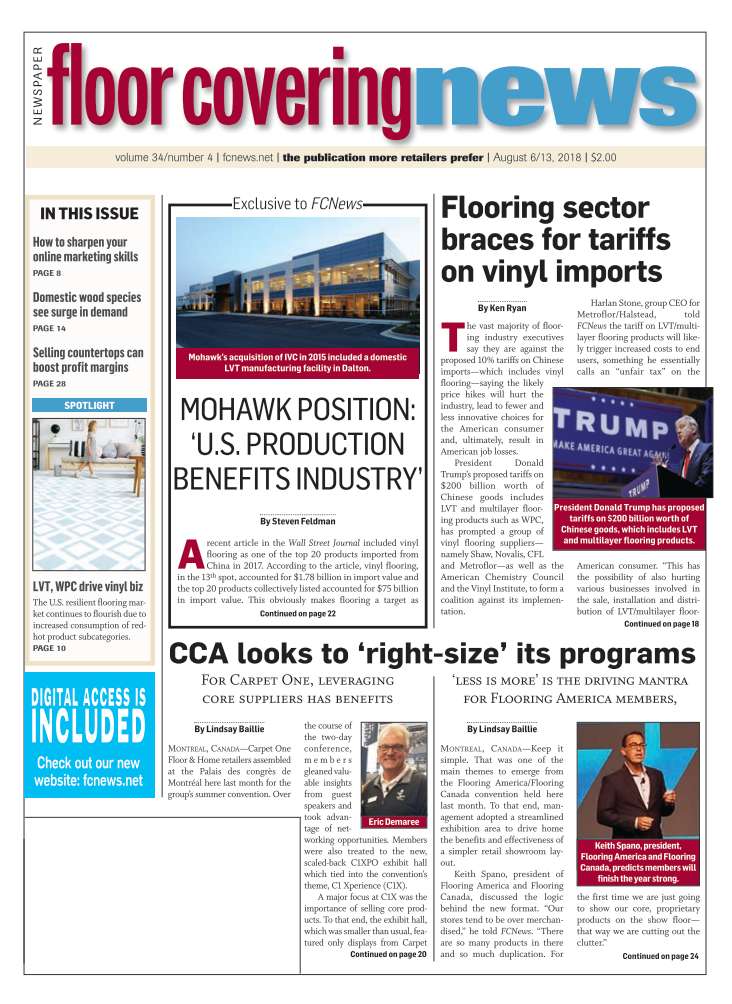August 6/13, 2018: Volume 34, Issue 4
By Jeff Johnson
Wood and bamboo flooring are natural products and, as such, are probably the most moisture-sensitive flooring products we deal with in this industry. Moisture problems can literally destroy a perfect wood floor by causing it to cup, buckle and warp, leaving no other solution than to remove and replace it.
Following are some dos and don’ts that can help save time and money on wood floor installations.
Check for moisture vapor emissions or relative humidity (RH) of the concrete subfloor. Traditional adhesives that do not offer moisture control are often less expensive than multifunctional, moisture-controlling solutions. A simple moisture test could save the homeowner some money per square foot if the concrete turns out to be dry. Checking for moisture vapor transmission through a concrete slab using calcium chloride test kits or RH meters may take time but aren’t complicated to do.
Make sure the floor is smooth, flat and defect free. Wood flooring is a fairly rigid material that does not conform to the subfloor over which it is installed. If the substrate has low spots, the adhesive will not contact the back of the wood flooring properly, thereby creating a hollow spot or even a noisy, creaking surface when someone walks over it. If the substrate has high spots, the adhesive layer may be too thin or can seep through the tongue and groove, causing cleanup problems. These high and low spots are a problem no matter which type of adhesive is used. The only way to correct this is to inject glue under the hollow spot and, in some severe cases, actually remove part of the flooring to re-adhere it.
The remedy: Use a self-leveling underlayment or other subfloor-preparation product to ensure the installer is working on a flat surface. If the concrete slab is dry and shows no signs of moisture vapor issues, traditional self-levelers can be used. If the concrete is damp and a moisture-controlling adhesive is going to be used, then the subfloor prep requires the use of exterior-rated products. Traditional self-levelers can only be used in moisture conditions maxing out around 8lbs MVER (ASTM 1896) and 90% RH (ASTM 2170).
Make sure the flooring to be glued down is approved by the manufacturer. Wood flooring manufacturers have justifiable reasons why their flooring can either be nailed/stapled down or adhered to a subfloor. Always read the manufacturer’s recommendations that come with the flooring to ensure the planned installation is within the installation guidelines for any particular wood flooring.
Don’t forget to leave an expansion joint around the perimeter of the floor installation. Wood is a natural product and, therefore, is sensitive to changes in temperature and humidity. Forgetting to leave the required expansion joint around the perimeter of a wood floor installation can lead to very complicated problems. A general rule of thumb is to always leave a gap at the perimeter of the wood floor equal to the thickness of the floor itself.
Don’t leave adhesive residues on the surface of the prefinished wood flooring. When gluing wood flooring to the substrate, be sure to remove all adhesive smudges from the surface while the adhesive is still wet. Always keep a clean rag around to make sure finish on the floor remains pristine.
Jeff Johnson is the business manager for Mapei’s floor covering installation systems line. He has more than 25 years of experience in floor covering installation product development and marketing, and he is also a bench chemist.

